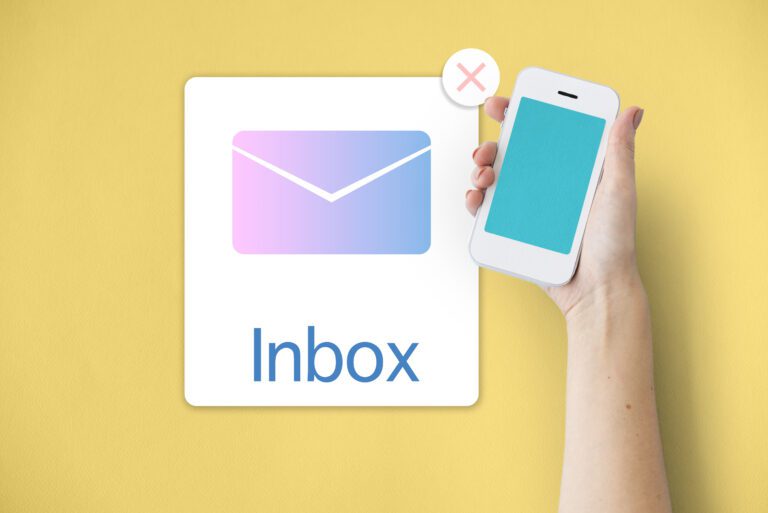Email Marketing For Beginners: A Complete Guide

I hope you enjoy this blog post. If you want Hello Bar to grow your leads, click here.
Author:
Ryan Bettencourt
Published
July 16, 2024
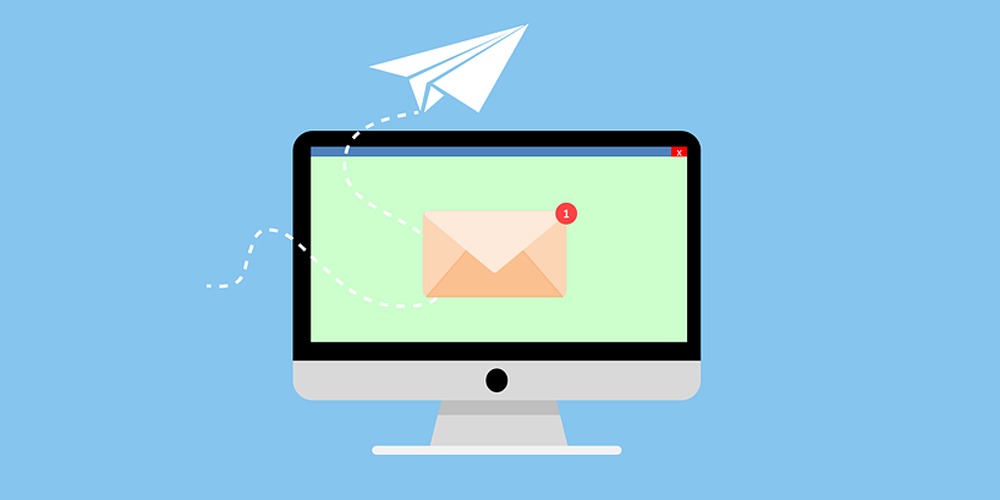
Email marketing is a form of digital and direct marketing that aims to attract, engage, or promote products and services to leads and existing customers.
Email marketing serves as a vital strategy for lead nurturing. Through email marketing, businesses can build rapport with their email subscribers, provide value, and eventually turn those prospects into customers.
Email marketing is one of the oldest forms of digital marketing; the first email marketing campaign was launched in 1978 and resulted in over $13 million in sales.
It remains a prominent marketing strategy for modern enterprises and it’s a great channel to capture, nurture and convert customers.
In this guide, we’ll explain all you need to know about email marketing, including the best practices for running an email marketing campaign. But first, here are some important email marketing statistics you should know about.
Email Marketing Statistics 2024
Email marketing is one of the most effective marketing mediums for businesses of all sizes. With the rise of new marketing strategies, it can be easy to get carried away and experiment with different platforms.
Your marketing strategy should be data-driven; here are a few of the prominent stats regarding email marketing.
- Email marketing revenue is projected to surpass $9.5 billion in 2024.
- In the research discussed above, more than half of the responding marketing professionals reported a 100% improvement rate in their email marketing campaigns’ ROI.
- In a survey conducted in the United States, over half (or 54%) of respondents chose relevance as their number one reason to open a marketing email.
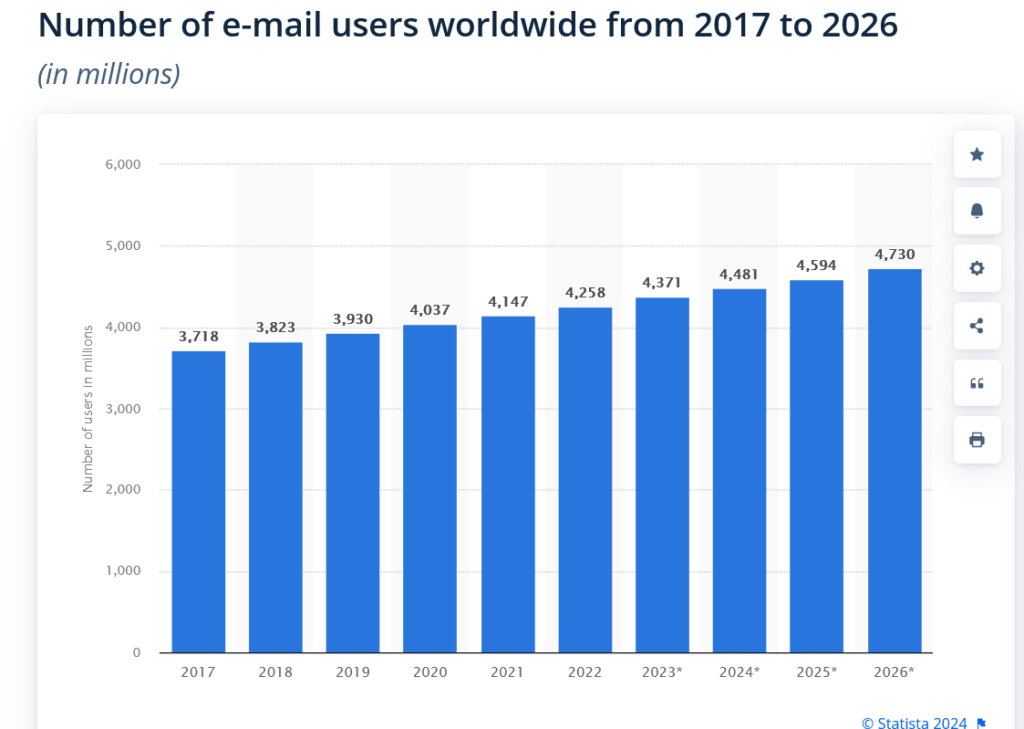
Image via Statista
Benefits of Email Marketing
Having seen some important statistics about email marketing, we’ll explain the significant benefits of running an email marketing campaign. Email marketing offers major benefits such as low cost, owned media, lead nurturing, and more.
Benefits of Email Marketing
1. Low Cost
Email marketing is one of the lowest-cost forms of marketing for businesses.
Whether you’re a one-person operation, a medium-sized business using an email marketing freelancer, or a global brand, all you need to get started with email marketing is an email list and email service provider.
These costs stay very low even as your email list expands to thousands and tens of thousands of subscribers.
The low overhead required to run email marketing campaigns ensures you receive a high ROI for your campaigns. To increase the ROI of your email marketing campaigns, try to increase deliverability by using the SPF record checker and taking other email security steps as well.
2. Owned Media
Email marketing is one of the few forms of owned media available today.
If you spend years and significant capital investing in growing an audience on social media platforms, you can still lose your audience based on the discretion of those companies.
With email marketing, your email list is 100% yours.
Regardless of what happens to your business, you can rely on having a list of targeted prospects and customers that you can market and sell to under any circumstances.
3. Targeted Audience
Email marketing is a great way to build a targeted audience.
When an email subscriber opts into your email list, you can ask them to provide some basic information like their name, email address, company, etc.
This allows you to get a basic understanding of your audience.
As you nurture your list with emails, you can collect more relevant information and use that to tailor your messaging.
This will allow you to segment your email subscribers based on their preferences and commonalities.
By doing this, you will be able to create targeted and personalized email campaigns that will have better conversions and ultimately more sales for your business.
4. Promotion of content
Your email list serves as your core audience.
If you have any important news surrounding your business or you have some new content, you can share it with your email list and get immediate traffic.
This can also help significantly with SEO.
If you have a new SEO-optimized blog post and share it with your email list, you can start getting social shares and backlinks to your post.
This can help significantly improve the rankings of that particular post in search engines.
5. Brand Building/Lead Nurturing
Email is a great medium to help guide prospects through your sales cycle.
When you have a new email subscriber, you can send them an email sequence that introduces your business and you can educate them and guide them from the awareness stage to the decision-making stage of your sales cycle.
By educating your prospects, you are also building your brand and establishing trust.
If your emails provide value to your subscribers, they will be more likely to buy or consider any offer you promote in your email campaigns.
This allows you unprecedented access to your prospects because you can send a handful of emails prior to pitching any of your products or services.
Additionally, there are numerous automation options for email marketing.
As soon as you create a copy of your email sequence, you can use email marketing CRM software to personalize your emails.
This will add a personalized touch to your emails and you can use the prospect’s name, company or any other data to address them and nurture your email campaigns.
6. High ROI
Another significant benefit of email marketing is the return on investment. This is due to the low investment cost of email campaigns and how effective they are at lead nurturing.
According to a study, email marketers made $36 in return for every $1 they spent on email marketing. This shows the high ROI on investment that comes with email campaigns.
With email marketing, you get value for every dollar you spend. Personalized email campaigns can directly boost sales and increase engagement, helping businesses maximize their marketing budget.
Also, since email marketing has easily trackable metrics, businesses can measure and optimize their email marketing strategies to get more return on their investment.
7. Automation
A major feature of email marketing campaigns is the opportunity for automation. With the improvements in technology over the years, brands can now set up automated workflows while running email marketing campaigns.
Automation in email marketing has made lead nurturing easier for businesses. For example, welcome emails, follow-up sequences, abandoned cart emails, and other email types can be automated.
This helps businesses engage customers at different stages of the buyer journey. Also, customer segmentation becomes easier through email marketing.
The automation capabilities make it easier to provide targeted content based on the past behavior and preferences of email subscribers.
For example, if a customer has abandoned their cart, an automated abandoned cart sequence can quickly provide content that can encourage the customer to complete the purchase.
8. Scalability
Lastly, email marketing is highly scalable. It’s one of the marketing strategies that is suitable for small-scale, medium, and large businesses.
Even as a small business with a limited budget, you can tailor email marketing to suit your business needs. As the business grows, you can gradually scale your email marketing campaigns to meet the changing business needs.
Also, email marketing is suitable for handling a large number of leads and customers for large-scale businesses. It is perfect for extending global reach effectively.
What Do You Need to Get Started With Email Marketing?
Email marketing is one of the basic marketing channels and mastering it is a good step on the way to becoming a digital marketing expert.
All you need is an email list and an email service provider and you can start sending emails immediately.
Email List:
Your email list is the backbone of your email marketing operations.
The larger your email list typically, the more impactful any email marketing strategy or campaign will be.
Your email list is typically grown through your blog or website.
When someone lands on your website or blog post and spends time, you can incentivize them to opt into your email list and they can provide you with their information.
The quicker you can grow your email list, the faster you will start seeing results with email marketing.
Email Marketing Platform
In addition to your email list, you will also need an email marketing platform. This is typically provided by a company and allows you to send emails using their domain.
The main purpose of an email marketing platform is to help you store email addresses and send emails.
The entire goal of getting the right one is to help you maximize your email marketing campaigns and help you generate more revenue.
The more advanced email marketing services will provide you with additional tools to help you maximize your campaigns like A/B testing, email segmentation, lead capture forms, and more.
There are many email marketing providers on the market, so it’s best to demo a few of them before deciding to pay for one.
How to Grow Your Email List
Now that we’ve covered the basics of email marketing, it’s time to get started with actionable advice that you can start implementing in your business.
The first and most important step to get started with email marketing is to grow your email list.
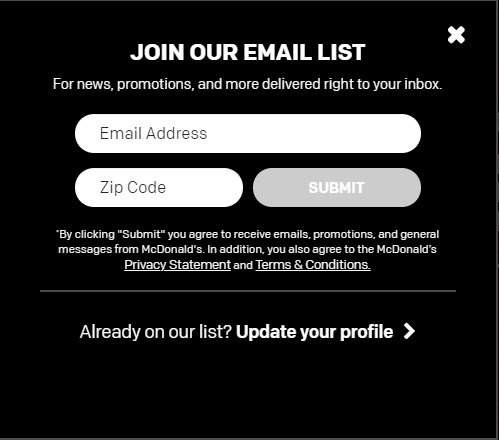
Image via Hellobar
By growing your email list, you’ll reach a certain number of subscribers where your email marketing will be impactful for your business.
Here are some of the best ways to start growing your email list today:
Get more organic traffic
Generating more organic traffic to your website is the best way to increase the size of your email list.
With more traffic to your website, you’ll have more opportunities to capture email subscribers.
Additionally, if your site already has significant organic traffic, your efforts to capture emails will be much more effective than if you had little traffic.
You can get more organic traffic to your website by improving your SEO.
This typically means producing more content and getting more quality backlinks to your website.
The more you do this, the more domain authority your site will have and this will help significantly in ranking for content.
Although organic traffic is great, you need to make sure that you’re targeting the keywords that your audience is searching for.
Using keyword research tools like Ahrefs will help you identify low keyword difficulty keywords and you can target those in your content to get more organic traffic to your website.
Continually doing this will help you improve your traffic over time and this will exponentially increase the effectiveness of your email capturing efforts.
Create Amazing Email Content
A vital mistake that many businesses make when trying to grow their email list is overlooking their email content.
Even if your site is bringing in millions of visitors each month and you’re converting a portion into your email list, it’s a wasted effort if you’re not retaining your subscribers.
Growth requires retaining your existing subscribers and this can be done by providing value-filled content.
To create great content for your email campaigns, you need to have an understanding of your audience’s wants and needs.
Some questions to consider when identifying your audience and their pain points include:
- Who is my target subscriber? What are their professions, where do they live, etc.?
- What’s their largest problem and how can I create email content that helps solve their main issue?
- What is the budget size of your average email subscriber?
Here’s an example of a customer profile created based on a target audience.
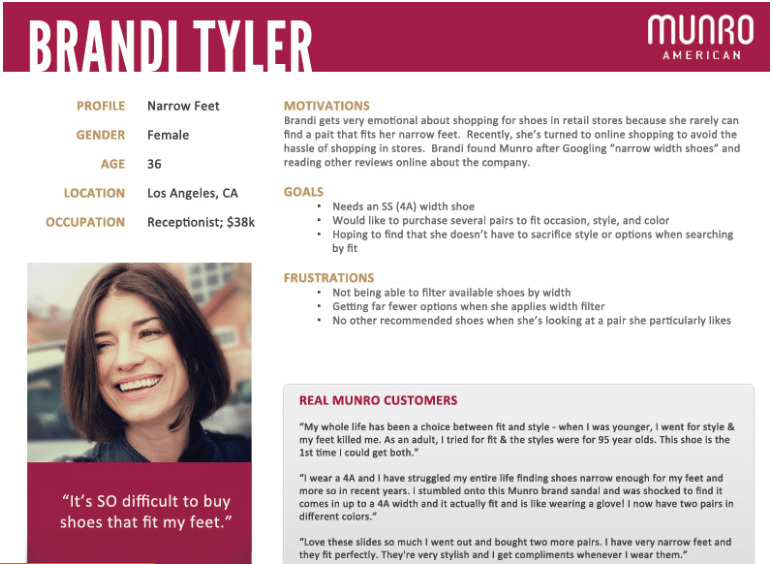
Image via Hellobar
Asking these types of questions will help you identify your target audience and ensure your messaging is clear and effective.
Additionally, you can use infographics, videos, images, and other engaging content to improve your email content.
This is a great way to stand out from the other dozens of emails that your subscribers receive every day.
Utilize Popups
A simple and effective way to capture email subscribers is to utilize popups on your website.
Popups are small windows that appear when a visitor is on your website and it usually contains an offer or a link to join an email list.
Popups are extremely effective for growing email lists because they can appear for all of the visitors on your website.
If your website is not already using popups, you are leaving thousands of email subscribers on the table.
Using a popup provider like HelloBar is a great way to maximize the effectiveness of your popups.
You can choose when a popup appears, the design of your popup, get access to A/B testing, and more.
This will help you engage your website visitors and turn them into email subscribers.
To learn more about how you can start using popups to convert your visitors into customers, check out this interview with HelloBar CEO Ryan Bettencourt here.
Use Social Media
If you already have a good following on social media, then you can easily invite your social media followers to sign up for your newsletter.
How? You can start by developing a landing page that prompts the reader to submit their email address.
Once you have this, you can link the landing page on your social media accounts. You can directly input the link on your bio on most social media platforms.
Offer Discounts and Giveaways
A highly effective way to grow your email contact list is by hosting giveaways or giving discounts as a reward.
To stand a chance to win the prize or get a discount, the criteria should include subscribing to your email newsletter. You can also create loyalty rewards to encourage people to join your email contact list.
Check out Learning Resources’ giveaway post asking followers to submit their email addresses to qualify.
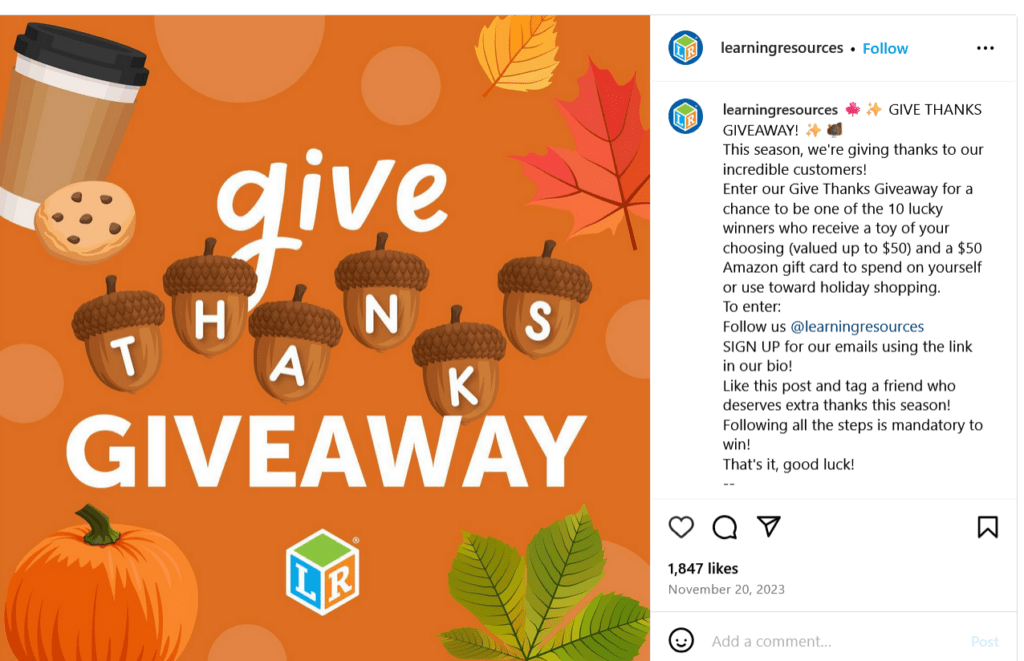
Image via Instagram
To broaden your reach, share the details on various social platforms as well as your website. You can also run ads if possible to get more engagement.
7 Best Practices for a Successful Email Marketing Campaign
To get the most out of your email marketing efforts, you need to follow the right steps and practices. In this section, we’ll explain the top seven practices for running an email marketing campaign successfully.
1. Define Objectives
For your email campaign to be successful, you need to clearly define what you’re looking to achieve through the campaign.
Brands run email campaigns for various reasons, such as nurturing leads, engaging existing customers, promoting products or services, driving website traffic, or simply boosting sales.
Your campaign objectives will define the intricacies of your campaign. However, ensure you set simple and easily trackable objectives. For instance, gaining and successfully engaging 200 new leads is a trackable and achievable objective.
Setting clear objectives helps you retain your focus and align your email marketing with your overall marketing strategy.
While creating your email marketing objectives, don’t forget to set specific metrics to measure your performance. For example, conversion rates, click-through rates, open rates, sales, and generated revenue are common metrics to track.
2. Grow and Segment Your Email List
We’ve explained how to grow your email list in the previous section. It’s not just enough to grow your email list, you need a high-quality email list that can make it easy to achieve your campaign objectives.
This is why we recommend growing your email list organically instead of purchasing email subscribers.
We’ve discussed effective methods such as using landing pages, social media content, and discounted offers.
To make your email campaign more effective, it’s best to segment your email list based on demographics, customer behavior, and other relevant factors. For example, you can separate your long-time customers from new leads.
Once you’ve segmented your email list, you can engage your subscribers effectively.
3. Personalization
To increase your engagement rates, you’d need to take personalization more seriously. Personalization can be the difference between an abandoned email message and a well-engaged email sequence.
To start with, ensure you always include the subscriber’s name in the email content such as the subject line and the body.
Apart from using names, you can take personalization further by leveraging email marketing automation and AI to gather important customer information.
Using information such as purchasing history, preferences, or browsing behavior, you can create personalized email content. Here’s an example of a personalized email based on a recent customer action.

Image via Hellobar
For example, a customer who has searched for certain kitchen items might be interested in other related kitchen items. Based on that, you can send personalized product recommendations.
Personalization in email marketing involves offering highly relevant content to different segments in your email list.
Metrics such as open rates, click-through or engagement rates are major indicators of how effective your email personalization has been.
You can also carry out A/B testing on email designs, subject lines, and email sequences to help you improve your personalization efforts. Lastly, don’t forget to always use consistent branding.
Use consistent colors, fonts, and a voice that the reader can easily associate with your brand.
4. Create Engaging Subject Lines
When you send emails to your subscribers, the first thing they’ll come across is the subject line. Your subject line is one of the major factors that determine whether your email gets opened or not.
Subject lines should be clear and precise, ideally less than 50 characters. While short, it should be catchy and give the subscriber a feel of what’s in the whole message. E.g. We have a limited-time offer just for you!”
When writing subject lines, you can create a sense of urgency. Make the subscriber eager to read the post. You can do this by using personalization, questions, or even emojis. E.g. “Are you interested in getting xxx for 10% off?”
Experiment with various catchy subject lines to identify the best one for your brand.
5. Optimize for Mobile
The majority of people reading your emails will likely do so from a mobile design. According to a study, the number of mobile users is projected to increase to about 7.41 billion in 2024.
This is why it’s necessary to take mobile optimization seriously when running email campaigns. When creating email sequences, use responsive design techniques to make your messages readable and engaging.
Use high-quality images, distinct CTAs, and a clear visual hierarchy. Use bullet points, headings, and other elements to optimize your emails for mobile.
Lastly, since a majority of your subscribers will likely view your emails on mobile, you should keep emails brief.
6. Create a Schedule
Your subscribers need to know when to expect your emails. So, you should stick to a consistent schedule. Depending on the email sequence (we’ll explain the types of email marketing campaigns later in this post), create a schedule.
The schedule can be daily, weekly, monthly, or any other tailored schedule that works. Also, create a schedule for follow-up emails.
For instance, subscribers who didn’t respond to the CTA can get a follow-up email based on a consistent schedule.
7. Measure Your Performance
The good thing about email marketing campaigns is you can easily analyze your performance to know what works and what doesn’t.
When running email marketing campaigns, measure indicators such as bounce rates, click-through rates, conversion rates, sales, and more.
Hellobar helps you track and analyze how your campaigns are performing and how you can make them better.
You can then run A/B tests to help you improve your email campaigns using the measured results.
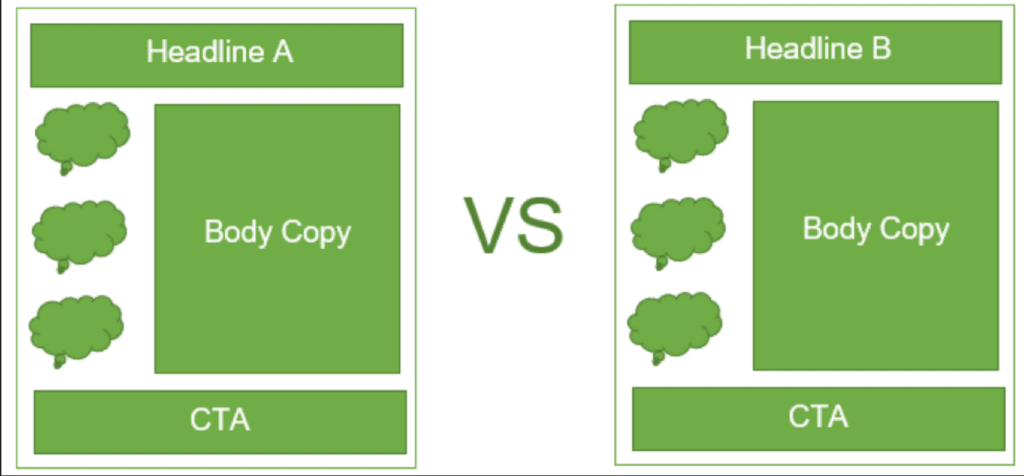
Types of Email Marketing Campaigns
Email marketing campaigns are not one-dimensional. There are various types of email campaigns. Each type is suited for a specific purpose. In this section, we’ll explain five major types of email marketing campaigns.
1. Welcome Emails
Welcome emails help to introduce new subscribers, customers, and leads to your brand. Usually, they are brief and actionable. Through welcome emails, you can educate the subscriber about your brand.
Check out Xero’s welcome email.
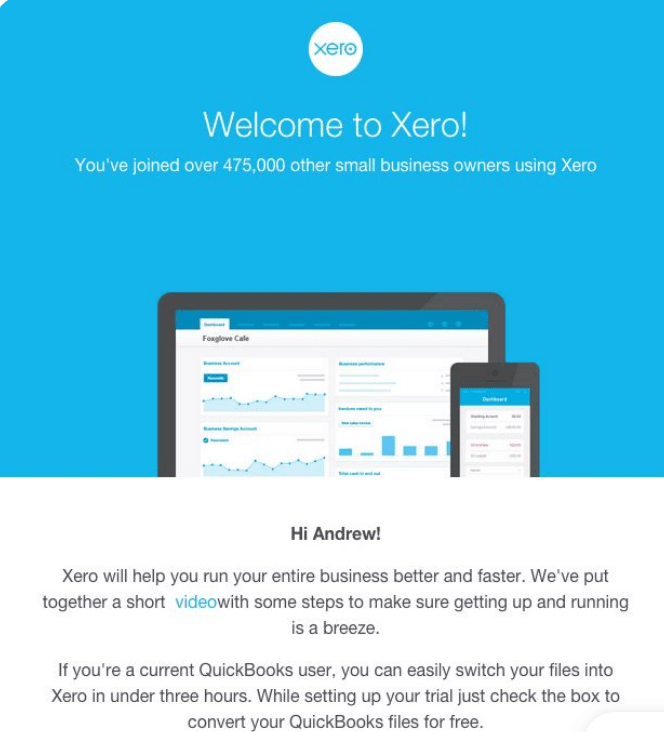
Image via Pinterest
When sending a welcome email, you can also include a discount or offer that the customer might be interested in. Since welcome emails help you make a first impression, it’s important to create engaging and relevant welcome emails.
2. Newsletters
Newsletters are usually non-promotional. After sending a welcome email, you can now share updates, industry news, and other useful general information about your brand to further engage your subscribers.
Check out The Nerdy Farm Wife’s newsletter.
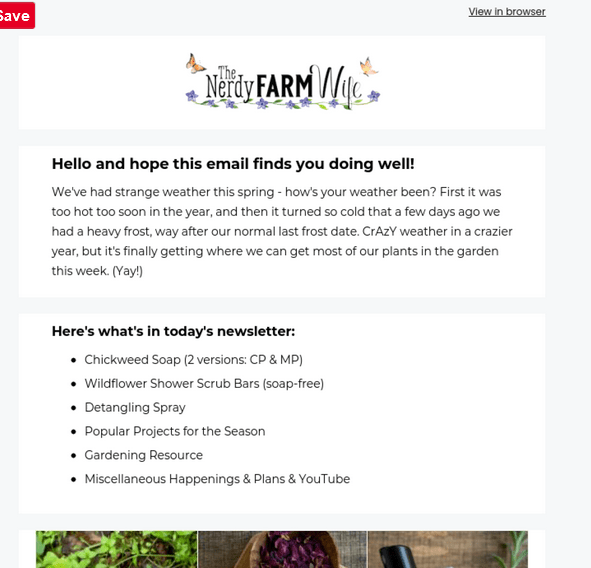
Image via Pinterest
Unlike most other email campaign types, newsletters are not to be sent very frequently. You can send them on a weekly or monthly basis.
3. Promotional Emails
You can hook your leads by crafting compelling promotional email campaigns.
Promotional emails should always include a clear CTA that encourages the reader to take action. In promotional emails, you can also include a limited-time offer or a discount. Check out this promotional email from Marriot Bonvoy.
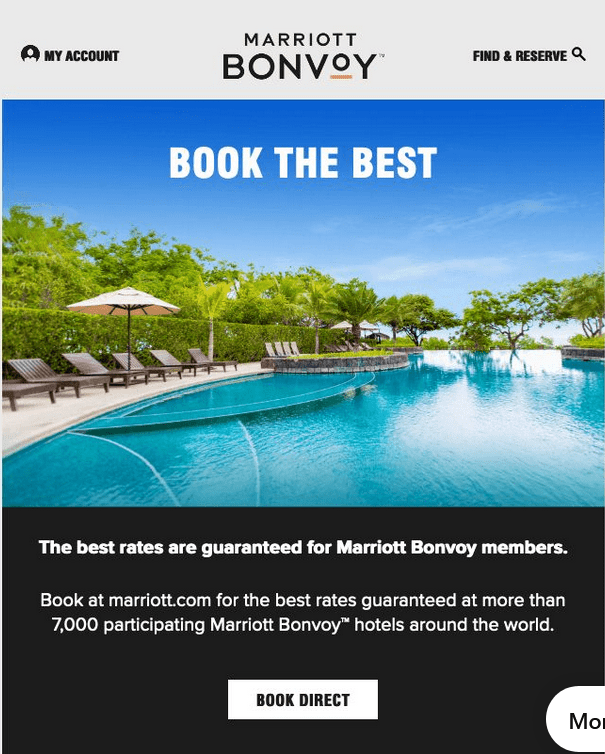
Image via Pinterest
These emails are directly aimed at driving sales and increasing product awareness. Due to this, promotional emails should offer clear details about products and services.
To make them more effective, you should adopt personalization. This ensures that each subscribers receive product recommendations that are relevant to them.
4. Abandoned Cart Emails
When people browse through products and services, they may add products to the cart but fail to complete the checkout process.
Abandoned cart email campaigns help businesses remind people about the products in their shopping carts. Here’s an example of an abandoned cart email reminding the user to complete their purchase.

Image via Hellobar
Through these emails, you can also convince the user to complete the checkout process through various means.
Abandoned cart emails include the product or service the customer is interested in, and usually an offer to motivate the subscriber to complete the sales process.
5. Follow-Up Emails
Follow-up emails are basically for checking up on subscribers who haven’t responded to a previous email. Knowing how to write a follow-up email is crucial.
Also, follow-up emails can help to gain feedback from customers after a purchase or any other action. Here’s an example of a follow-up email from Renaissance Hotels.

Image via Shopify
Subscribers can miss an email or forget to follow the CTA. Follow-up emails help to remind subscribers and encourage them to take action. These emails are generally brief and actionable.
6. Re-Engagement Emails
Re-engagement emails help to foster customer loyalty. The main purpose is to reengage subscribers who haven’t responded in a while, as well as old customers. Check out this re-engagement email from Virgin Trains.
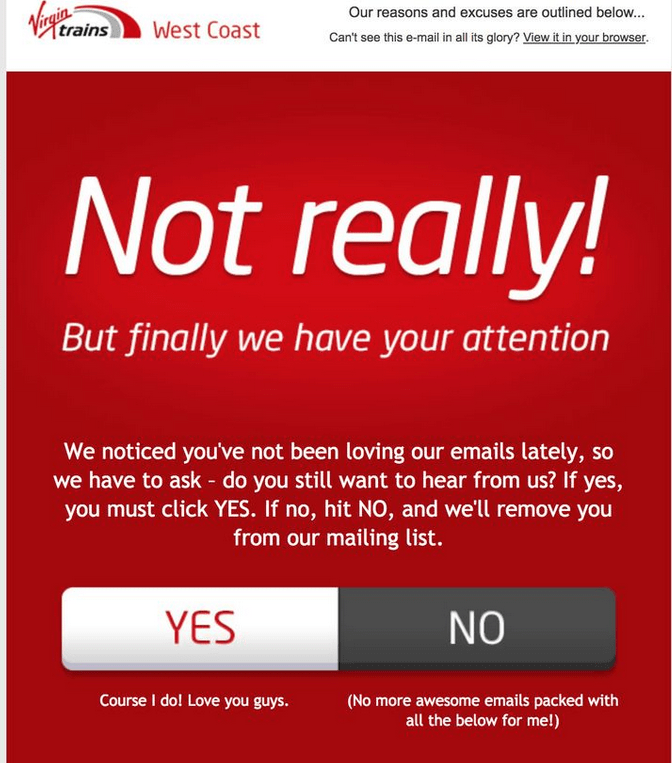
Image via Pinterest
While nurturing new leads is important, it is also important to keep your long-time subscribers and customers engaged.
Previous customers may fail to respond to your emails due to various reasons. Through re-engagement emails, you can request and receive feedback from your customers about why they stopped engaging.
To encourage engagement, these emails often include a discount offer or a time-limited offer, as well as product recommendations.
FAQs
Q1. How do I build an email list?
There are various ways to build an email list:
- Add signup forms to your website or landing pages.
- Encourage signups by offering discounts, free content like ebooks, or early access to new products.
- Social media is an effective platform to gather email addresses. You can promote your email list on your social media channels and encourage followers to subscribe for updates and exclusive offers.
Q2. How do I start email marketing as a beginner?
Getting started with email marketing is easy. Just follow the steps below:
- Grow Your Email List: Collect email addresses through sign-up forms on your website, social media, and in-person events.
- Get the Right Email Marketing Platform.
- Follow the best practices listed in this guide.
Q3. Is email marketing easy to learn?
Yes, email marketing can be easy to learn, especially with the abundance of resources available online. With a bit of time and practice, you can master the basics and start seeing positive results.
Also, there are many user-friendly platforms and advanced tools designed to simplify the process for beginners.
Q4. Is email marketing expensive?
One of the main advantages of email marketing is cost-effectiveness. Email marketing campaigns are suitable for small-scale to large-scale businesses.
The favorable ROI makes it perfect for small businesses operating on a limited marketing budget. Also, there are various email service providers with affordable plans.
Q5. How can I create engaging email content?
To create engaging email content, use compelling subject lines. Also, implement visual hierarchies and easy-to-read content structures.
Remember to stick to a consistent brand voice while taking advantage of personalization to encourage your subscribers to interact with your email content.
Wrapping Up
Email marketing remains a powerful marketing strategy suitable for businesses of various sizes. In this guide, we have explained all you need to know to run a successful email campaign.
Remember to grow your email list organically, segment your subscribers, send personalized emails, and follow the best practices we’ve explained in this article. With these practices, you’ll see email marketing yield results for your business in no time.




